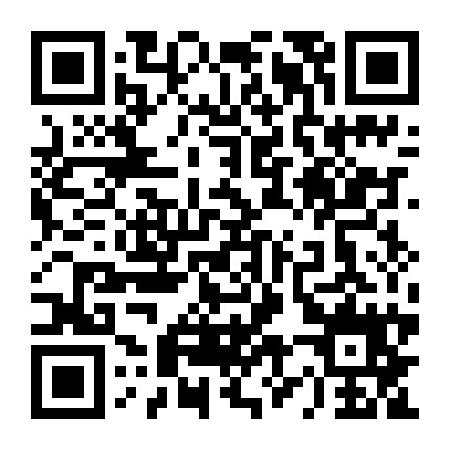医学博士英语统一考试之后,即将迎来各院校的考博英语初试,英语考试的备考,参考历年真题是一个很重要的备考过程,今天新东方在线小编给大家整理了大连理工大学2013年考博英语真题,帮助大家更好的备考,考博英语考试,一起来看看吧!
Disease is a fluid concept influenced by societal and cultural attitudes that change diachronically in response to new scientific and medical discoveries. Historically, doctors defined a disease according to a cluster of symptoms, and as their clinical descriptions became more sophisticated, they started to classify diseases into separate groups, so that from this medical taxonomy came new insights into disease etiology. Before the 20th century, schizophrenia and syphilitic insanity were treated as the same disease, but by early 1900 it became evident that psychoses without associated dementia represented a separate disease for which the term schizophrenia was then coined. The definition of schizophrenia continues to evolve from the psychiatric disease of the 1960s to an illness with a suspected genetic etiology, though the existence of such an etiology remains uncertain. While an optimistic hunt is still on for the genes involved, we must continue to define schizophrenia in terms of the presence or absence of “positive” and “negative” symptoms.
Labeling someone as diseased, however, has enormous individual, social, financial, and physical implications, for irrespective of disease symptoms, the label itself may lead to significant distress. Individuals with asymptomatic conditions, including genetic variations, may be perceived by themselves or others as having a disease. It is not that labeling someone as diseased is always positive-------it does have severe ramifications, affecting decisions to have children or resulting in unjust treatment by life, medical, and disability insurers-------but it can be beneficial, legitimizing symptoms, clarifying issues of personal responsibility, and improving accessibility to health care. Nevertheless, deviations from normal that are not associated with risk should not be considered synonymous with disease. Two schools---------nominalist and essentialist or reductionist----------have debated the clinical criteria used to label a patient as diseased. Nominalists label symptoms with a disease name, such as schizophrenia, and do not offer an explanation of the underlying etiology, while essentialists contend that for every disease there is an underlying pathological etiology, and now argue that the essential lesion defining the disease state is a genetic abnormality.
It has been suggested that diseases defined according to the essentialist tradition may be precisely wrong, whereas those defined in the nominalist traditional may be roughly accurate. But in labeling a disease state, we must consider both the phenotype (symptoms) or the genotype (genetic abnormality), for adverse consequences, while the latter helps suggest specific genetic or pharmacologic therapies. Thus, both clinical criteria and genetic abnormalities should be used to define a disease state, and the choice of a disease definition will vary according to what one wishes to achieve, the genetic counseling of family members or the effective treatment of the patient.
21. The author of the passage is primarily concerned with
A) proposing a return to a traditional taxonomical system
B) describing an way to resolve a taxonomical dilemma
C) assessing the success of a new taxonomical method
D) predicting a change in future taxonomy
22. It can be inferred that the author considers the way schizophrenia has been classified by doctors after 1960 to be an example of which of the following?
A) A disease which resisted traditional methods of classification, but has been served well by modern methods of classification
B) A disease which has resisted modern methods of classification, and continues to require a traditional method of classification
C) A disease which satisfies modern methods of classification best, but which scientists prefer to classify through a traditional method
D) A disease which satisfies traditional methods of classification best, but which scientists prefer to classify through a modern method
23. According to the passage, an adherent of the “nominalist school’ would classify a rare new fever in which of the following ways?
A) She would wait until the disease appears in other patients, then classify it by establishing variations in their symptoms.
B) She would determine whether the disease is acquired or genetic, then classify it accordingly.
C) She would isolate the bacteria or virus or genetic anomaly which causes the disease, then classify it accordingly.
D) She would describe the patient’s symptoms, compare them to patients who have had similar symptoms, then treat the pattern as a disease.
24. Which of the following best describes the function of the last paragraph in relation to the passage as a whole?
A) It summarizes the benefits that may accrue from a perfected system of pathological taxonomy.
B) It provides additional reasons why pathological taxonomy is a difficult endeavor.
C) It argues for a synthesis of two methods of pathological taxonomy already in use.
D) It continues to highlight the differences between two methods of taxonomical pathological taxonomy.
25. It can be inferred that which of the following situations is likely to be most problematic to an adherent of the “essentialist” method of pathological taxonomy?
A) A patient suffering from fever, in which the virus that is apparently responsible for the symptoms has not been isolated
B) A patient suffering from lung inflammation which, though resembling other inflammations, does not respond to any known treatments
C) A patient suffering from a genetic anomaly whose cause may be known but whose consequences remain unidentified
D) A case of a patient with symptoms that may have arisen from two known diseases of different sources
考博必备!历年真题及答案
考博精品好课,就选新东方!

 资料下载
资料下载
【必看】考博英语词汇10000例精解
发布时间:2020-09-02关注新东方在线服务号
回复【10000】免费获取
医学考博英语作文核心基础词汇整理
发布时间:2020-04-15关注新东方在线服务号
回复【医学考博】获取
医学考博英语阅读理解练习资料
发布时间:2020-04-15关注新东方在线服务号
回复【医学考博】获取
法学考博英语高频词汇word版
发布时间:2020-04-15关注新东方在线服务号
回复【医学考博】获取
医学博士英语统考真题及解析
发布时间:2019-12-26关注新东方在线服务号
回复【考博真题】获取
全国医学博士外语统一考试真题
发布时间:2019-12-26关注新东方在线服务号
回复【考博真题】获取
中科院考博英语复习备考实战经验分享
发布时间:2019-12-26关注新东方在线服务号
回复【考博经验】获取
中科院考博英语真题练习资料
发布时间:2019-12-26关注新东方在线服务号
回复【考博真题】获取

关注新东方在线服务号
关注新东方在线服务号,
免费获取考博必看干货资料

 推荐阅读
推荐阅读
沈阳工业大学2022年博士研究生招生考试英语真题B卷
来源 : 沈阳工业大学 2022-12-26 16:19:18 关键字 : 沈阳工业大学2022博士英语真题
沈阳工业大学2022年博士研究生招生考试英语真题A卷
来源 : 沈阳工业大学 2022-12-26 16:18:19 关键字 : 沈阳工业大学2022博士英语真题
沈阳工业大学2021年博士研究生招生考试英语真题B卷
来源 : 沈阳工业大学 2022-12-26 16:09:06 关键字 : 沈阳工业大学2021博士英语真题
沈阳工业大学2021年博士研究生招生考试英语真题试卷A卷
来源 : 沈阳工业大学 2022-12-26 16:07:31 关键字 : 沈阳工业大学2021博士英语真题
沈阳工业大学2020年博士研究生招生考试英语真题试卷
来源 : 沈阳工业大学 2022-12-26 16:04:42 关键字 : 沈阳工业大学2020年博士英语真题


 考博好课推荐
考博好课推荐
基础薄弱,备考迷茫,送纸质资料
价格 : ¥2280元
资深教师,教学简明,直接有效!
价格 : 0元
 资料下载
资料下载
关注新东方在线服务号
回复【10000】免费获取
关注新东方在线服务号
回复【医学考博】获取
关注新东方在线服务号
回复【医学考博】获取
关注新东方在线服务号
回复【医学考博】获取
关注新东方在线服务号
回复【考博真题】获取
关注新东方在线服务号
回复【考博真题】获取
关注新东方在线服务号
回复【考博经验】获取
关注新东方在线服务号
回复【考博真题】获取

 阅读排行榜
阅读排行榜
 相关内容
相关内容